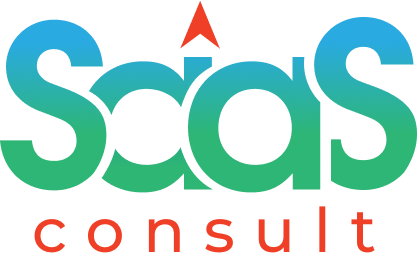In the fast-paced and ever-evolving world of Software-as-a-Service (SaaS) marketing, agility is crucial for success. The ability to adapt quickly, respond to market changes, and deliver value to customers is essential. That’s where Agile methodology comes into play. Agile, originally developed for software development, has found its way into marketing operations, enabling teams to be more flexible, collaborative, and efficient. In this article, we will explore how SaaS companies can implement Agile in their marketing operations management to drive growth and stay ahead of the competition.
Understanding Agile Marketing
Agile marketing is an iterative approach that emphasizes adaptability, collaboration, and customer-centricity. It enables marketing teams to break down complex projects into smaller, manageable tasks, and work in short cycles called sprints. Each sprint typically lasts two to four weeks and focuses on delivering a specific set of marketing deliverables.
Customer Collaboration over Strict Planning
Agile marketing puts a strong emphasis on customer collaboration. It involves continuous feedback from customers, which helps shape marketing strategies and tactics. By involving customers early in the process and incorporating their feedback, SaaS companies can ensure that their marketing efforts are aligned with customer needs and preferences.
Adaptive and Iterative Approach
Agile marketing embraces change and uncertainty. Rather than following a rigid, long-term marketing plan, it encourages iterative planning and execution. Marketing teams continuously assess and adapt their strategies based on real-time data and market feedback. This enables them to respond quickly to changing market conditions and optimize their marketing efforts accordingly.
Cross-Functional Collaboration
Agile marketing encourages collaboration and communication across different teams and disciplines within the organization. Marketing teams work closely with sales, product, and customer support teams to align goals, share insights, and deliver a cohesive customer experience. This cross-functional collaboration ensures that marketing efforts are aligned with overall business objectives and customer needs.
Data-Driven Decision Making
Agile marketing relies on data and analytics to drive decision making. By leveraging data from various sources, such as customer behavior, market trends, and campaign performance, marketing teams can make informed decisions and optimize their strategies. Data-driven insights enable them to identify areas of improvement, iterate on campaigns, and allocate resources effectively.
Continuous Learning and Improvement
Agile marketing embraces a culture of continuous learning and improvement. Marketing teams regularly reflect on their performance, gather feedback, and identify opportunities for growth. This feedback loop enables them to learn from their experiences, make adjustments, and continuously enhance their marketing operations.
Implementing Agile in SaaS Marketing Operations Management
To implement Agile in SaaS marketing operations management, consider the following steps:
Embrace Agile Principles and Mindset
Start by familiarizing your marketing team with Agile principles and the Agile mindset. Educate them about the core concepts of Agile marketing, its benefits, and how it differs from traditional marketing approaches. Foster a culture of collaboration, adaptability, and continuous improvement within the team.
Form Cross-Functional Teams
Create cross-functional teams comprising individuals from different disciplines, such as marketing, sales, product, and customer support. These teams should have a diverse skill set and represent different perspectives within the organization. Cross-functional collaboration facilitates better communication, alignment of goals, and collective decision making.
Define Clear Goals and Prioritize Initiatives
Set clear goals and objectives for each marketing initiative. Align these goals with overall business objectives and customer needs. Prioritize initiatives based on their potential impact and value. Define key performance indicators (KPIs) to measure success and track progress.
Break Down Projects into Sprints
Divide marketing projects into smaller, manageable tasks that can be completed within a defined time frame, typically two to four weeks. These tasks should be focused, achievable, and aligned with the project goals. Assign tasks to team members based on their expertise and availability.
Conduct Regular Stand-Up Meetings
Hold regular stand-up meetings, also known as daily scrums, to keep the team aligned and informed about progress. During these meetings, team members briefly discuss their accomplishments, planned tasks, and any challenges they may be facing. These meetings foster transparency, collaboration, and quick issue resolution.
Iterate, Test, and Learn
After each sprint, conduct a retrospective meeting to reflect on the sprint’s outcomes. Analyze the results, gather feedback from stakeholders, and identify areas for improvement. Based on the feedback and data analysis, make necessary adjustments to your marketing strategies, campaigns, and processes.
Embrace Data and Analytics
Leverage data and analytics to drive data-driven decision making. Monitor key metrics, analyze campaign performance, and gather insights to inform future marketing efforts. Implement marketing analytics tools to track and measure the impact of your initiatives. Use these insights to optimize your strategies and allocate resources effectively.
Foster Collaboration and Communication
Promote a collaborative and open communication culture within the marketing team and across the organization. Encourage knowledge sharing, cross-functional collaboration, and regular feedback loops. Leverage project management and collaboration tools to facilitate communication and streamline workflows.
Continuously Improve
Embrace a culture of continuous improvement. Encourage team members to share their ideas, experiment with new approaches, and learn from both successes and failures. Foster a safe environment that values innovation and encourages learning from mistakes. Regularly review and refine your Agile marketing processes to ensure ongoing improvement.
Benefits of Implementing Agile in SaaS Marketing Operations
Implementing Agile in SaaS marketing operations management can yield several benefits for SaaS companies:
- Increased adaptability and responsiveness to market changes
- Improved collaboration and communication across teams
- Enhanced customer-centricity through continuous customer feedback
- Faster time-to-market for marketing campaigns and initiatives
- Higher efficiency and resource utilization
- Continuous learning and improvement based on data and insights
- Alignment of marketing efforts with business objectives and customer needs
By adopting Agile principles and practices in marketing operations, SaaS companies can optimize their marketing strategies, improve customer experiences, and drive sustainable business growth in a dynamic and competitive market.
Conclusion
Agile methodology provides a powerful framework for SaaS companies to navigate the complexities of marketing operations management. By embracing Agile principles, fostering cross-functional collaboration, and implementing iterative practices, SaaS companies can unlock new levels of efficiency, customer-centricity, and growth. By continuously learning, adapting, and optimizing, SaaS companies can stay ahead of the competition and deliver exceptional value to their customers.

